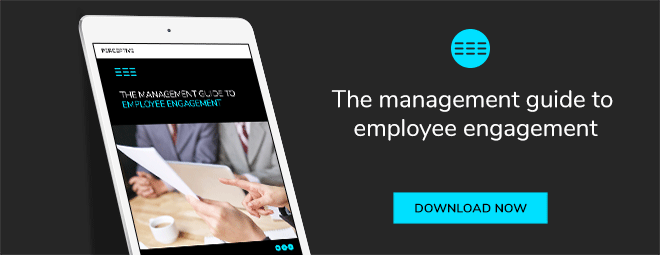Leading and managing people is a tough game in the world of business today.
Companies are struggling to decrease workplace stress, simplify business processes, and reduce complexity, with 66 per cent believing their employees are “overwhelmed” by the modern work environment; and 74 per cent state workplace complexity as a significant problem.1
And it's the role of the manager to somehow navigate this minefield of disengagement, stress and lack of motivation.
For those with the will and the capacity to lead, however, there are some proven techniques to overcome most of the common hurdles.

1. Recognise and appreciate
Recognition is a simple human need. However, it's astonishing that so many managers and business leaders forget this crucial factor.
Money alone is simply not enough to make employees happy, keep them engaged or to retain them.
Of course, appreciation needs to be balanced with accountability, control and being pragmatically results-driven. As a business leader, it's vital that you recognise the desire for employees to be appreciated.
2. Make it simple
Today's business environment is complex. Navigating variable roles and unusual hierarchies does nothing for employee engagement—quite the opposite. Removing this bureaucracy and having a flat structure can increase the levels of satisfaction from employees significantly.
Allow more autonomy and create an environment that favours trust and support. This is proven (for example by the University of Rotterdam in their work productivity studies) to decrease levels of cardiovascular and other illnesses.
If an organisation doesn’t allow for a certain amount of empowerment and local control, complexity can lead to high levels of error and stress.
Related content: How to engage your employees and retain them
3. Set good goals
Goal setting can be a challenge if you consistently set goals but don’t revisit them or align them with wider and long-term business objectives.
If you look at the goals you’ve set for your team and revise them (if needed) every quarter, you’ll see your performance and retention levels rise. This is an effective way to keep employees focused and engaged.
4. Be a good coach
Good coaching promotes engaged and high-performing employees that want to stay with a company.
It not only encompasses directed management, but the most valuable role of a leader is to promote learning and growth for everyone in the team. Continuous learning is essential to being able to develop and adapt to dynamic market conditions.
As a leader, you'll want to encourage employees to constantly improve their skills and knowledge. Have your staff attend training sessions or expand their market knowledge as it can provide great long-term value to a company.
5. Measure engagement
How do you know if you're a good leader? Having a strategic plan as to how you measure engagement is vital. Know what questions are important to your business and what you need to ask yourself to ensure you’re on track.
3 questions to ask yourself as a leader:
- What does “employee engagement” mean for your business?
- How do you measure and capture employee feedback and sentiment on a daily basis? This is important so that you can tweak management practices and the work environment. It will also help you quickly identify and predict anything that creates issues in engagement and retention.
- Is engagement a core part of your business strategy? If not, make it so that it is. It’s not just an "HR issue", it’s something that will impact the whole business long term.
Want to learn more about how to boost employee engagement? Check out our free eBook below!
1. Deloitte, 2015. 'Global organizations face looming crisis in engagement and retention of employees, according to Deloitte survey', www2.deloitte.com.
